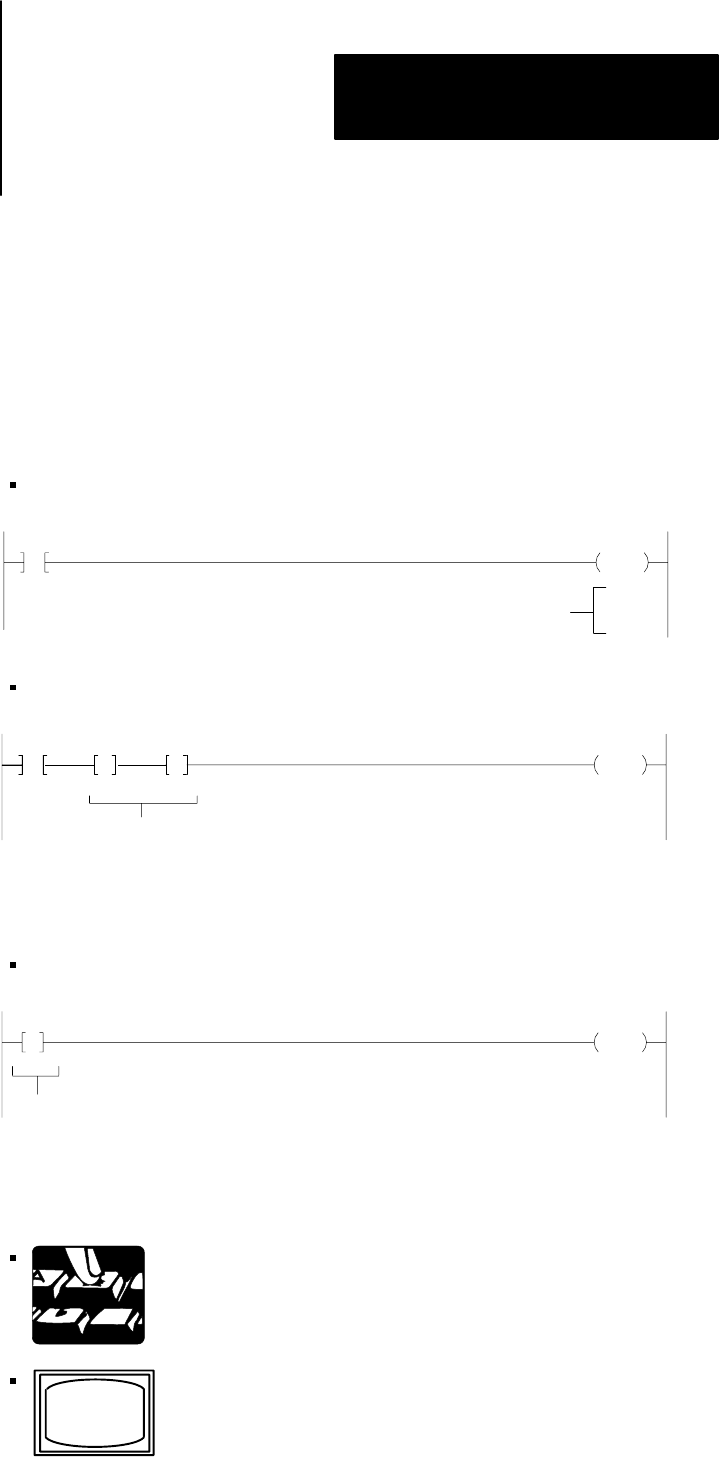User Manual Owner's manual
Table Of Contents
- 1772-6.5.8, Mini-PLC-2/02, -2/16, -2/17 Processor, User Manual
- Important User Information
- Summary of Changes
- Table of Contents
- 1 - Using This Manual
- 2 - Fundamentals of a Programmable Controller
- 3 - Hardware Features
- 4 - Installing Your Programmable Controller
- 5 - Starting Your Processor
- 6 - Maintaining and Troubleshooting Your Processor
- 7 - Memory Organization
- 8 - Scan Theory
- 9 - Relay-Like Instructions
- 10 - Program Control Instructions
- 11 - Timers and Counters
- 12 - Data Manipulation and Compare Instructions
- 13 - Three-Digit Math Instructions
- 14 - EAF Math Instructions
- 15 - EAF Log, Trig, and FIFO Instructions
- 16 - EAF Process Control Instructions
- 17 - Jump Instructions and Subroutines
- 18 - Block Transfer
- 19 - Data Transfer Instructions
- 20 - Bit Shift Registers
- 21 - Sequencers
- 22 - Selectable Timer Interrupts
- 23 - Report Generation
- 24 - Program Editing
- 25 - Programming Techniques
- 26 - Program Troubleshooting
- A - Specifications
- B - Processor Comparison Chart
- C - Number Systems
- D - Glossary
- E - Quick Reference
- Index
- Back Cover

Using This Manual
Chapter 1
1-3
A word equals 16 bits; a byte equals 8 bits (1/2 of a word).
Words in [ ] denote a key name or symbol. Words in < > denote
information that you must provide - for example, an address value.
All word addresses are displayed in the octal numbering system.
Therefore, references to base 8 are not displayed.
Word values are displayed in:
decimal (0-9) for timers, counters, and mathematics
CTU
010
00
030
PR 555
AC 123
Decimal
hexadecimal values (0-9, A-F) for Get and Put instructions
010
00
030
Hexadecimal
010
00
011 012
GG
00FFF 123
Important: Numbers 0-9 are displayed the same in decimal and
hexadecimal.
octal byte values for examine on and output energize instructions
0101 030
Octal
00
B
237
Keystroke directions are divided into two columns:
tells you what key or keys to press
tells you the processor’s action
Conventions










